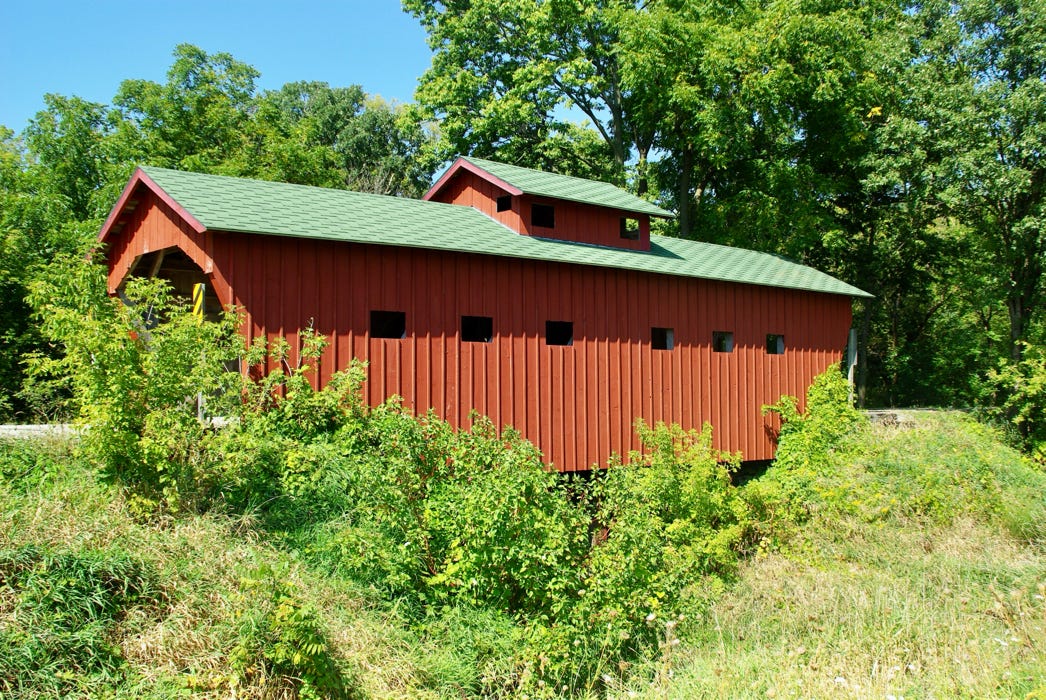
Click to zoom photo

Click to zoom photo
My Visitor Guide
Ashland Mural Walk
Covered Bridges

Click to zoom photo

Click to zoom photo
It is arguable how many covered bridges there are in Wisconsin. Wikipedia says, “there are five authentic covered bridges in … Wisconsin; only one of them is historic. A covered bridge is considered authentic not due to its age, but by its construction. An authentic bridge is constructed using trusses rather than other methods such as stringers, a popular choice for non-authentic covered bridges.” The Milwaukee Journal Sentinel reported in 2018 that there were “8 picture-perfect covered bridges to visit around Wisconsin.” I’ll keep looking, but I have come across three, one of which all hands seem to agree is the only historical one: Cedarburg.
Cedarburg Covered Bridge
The Cedarburg Covered Bridge is the oldest covered bridge in Wisconsin, built in 1876. It was built of pine woods logs from Baraboo. It is a lattice truss construction, meaning no nails or bolts. It uses wood planks secured with hardwood pins. It is listed on the National Register of Historic Places. It no longer is used for vehicle traffic, but only foot traffic in the Covered Bridge Park in Cedarburg, near the junction of Highways 60 and 143 on the Covered Bridge Road.
Horton Bowstring Bridge
The Horton Bowstring Bridge is now located at Amnicom Falls State Park, spanning the Amnicom River. Charles Horton designed the bridge in 1897-1898, which he claimed would be strong, light, and durable. It uses arched beams secured with hooks and clips rather than rivets and bolts. The bridge was moved from its highway location to the Amnicom Park in 1930. It provides visitors easy access to the island around which the Amnicom River flows. There are five other Horton bridges located at the Van Loon Wildlife Area in La Crosse County..

Glacial River Trail Covered Bridge
The Glacial River Trail Covered Bridge was built in 2000. Wood for the bridge was removed from a barn located just south of here that was built in 1906. Construction of the bridge took three months.
Crag Roost of Fort Atkinson provided the vision and much of the labor to accomplish the project. Craig received considerable assistance from family, friends, volunteers and staff from the Jefferson County Parks Department.
The Glacial River Trail traverses farmland, prairie, wetlands, and forests in southeastern Wisconsin.